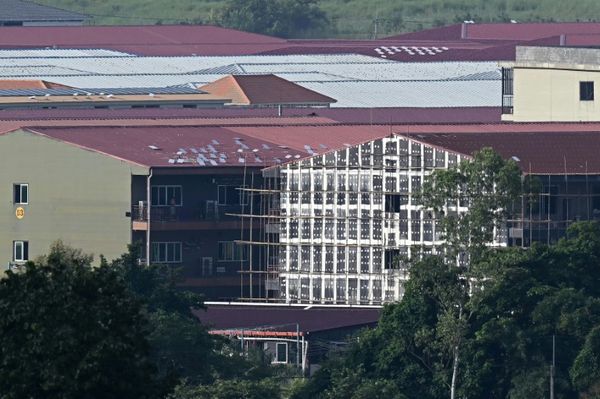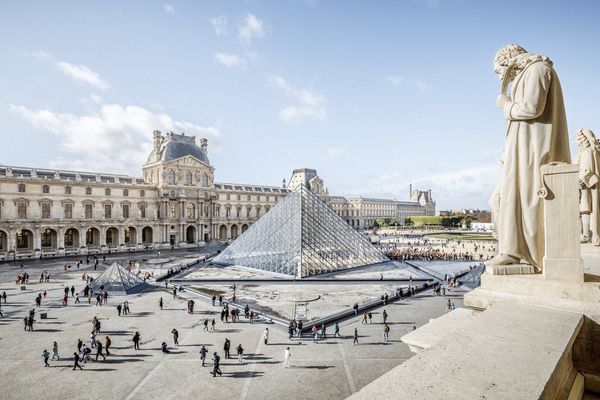Baffled City
Exploring the architecture of gentrification.
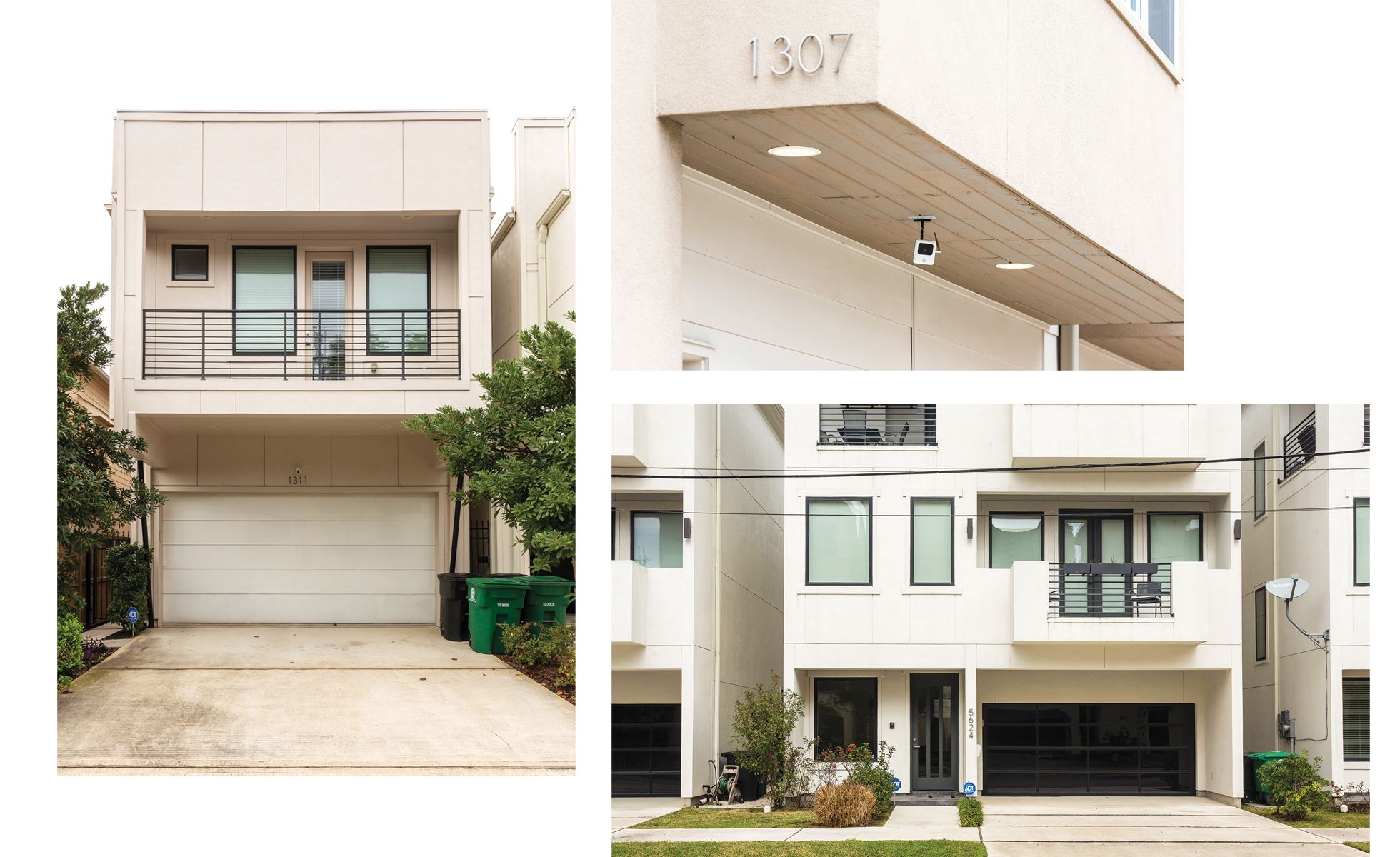
Text by Allyn West
Photos by Spencer Selvidge
March 5, 2020
“Ugly,” Maria Nicanor says, “is a complicated word.”
Nicanor moved with her family from Madrid to Houston in 2017 to become the executive director of the Rice Design Alliance, a nonprofit at the architecture school at Rice University. When Nicanor looks at the newer houses in Houston that she calls “white elephants”—those wonky, stacked boxes that look more like what children build with Legos than what they draw with crayons—it’s not so much that she finds the architecture aesthetically dubious (though she does), it’s that she sees right through it to “the systems that over decades have made it this way.”
Ben Koush, a Houston architect and architectural critic, is more blunt: “I think they’re ugly,” he says. “But I also realize that they’re following the requirements of the market.”
The rules and systems that have produced this standardized architecture—financial ones, largely determined by banks and property appraisers, as well as political ones—create a kind of socioeconomic standardization, determining who can afford to live in the neighborhoods experiencing rapid gentrification.
That, too, is a complicated word. Cities can’t be expected to preserve older neighborhoods forever unchanged. But they seem baffled about how and even whether to balance the encouragement of new development with the engagement and enrichment of the longtime residents of those neighborhoods.
And our cities look like that: baffled. It’s difficult to look at the images that follow and not conclude that the rules and systems aren’t addled.
</ br>
So what’s ugly? Though the size of the average American house has doubled since the 1960s, surging toward 2,600 square feet, the size of these neighborhoods—just minutes from everywhere, as real estate agents and commercial builders like to say, close to jobs and downtowns—has not.
That space comes at a premium, and people for whom “affordable housing” is something other people worry about are willing and able to pay it. They want to be able to walk to the coffee shop even if the baristas who pull their shots of espresso can’t.
“What is upsetting,” Koush says, “is that people made lives for themselves, and then the middle-class white people want to move back in and claim the territory for themselves and push those people out.”
Ignored for years, redlined by the federal government, and systematically denied the loans that would have allowed the families who lived there to build generational wealth, these “hot,” “new” neighborhoods are being “discovered.” For someone to move in, someone else has to move out. So, in East Austin, in Houston’s Freedmen’s Town and Third Ward and Montrose, in Dallas’ Bishop Arts and Oak Cliff, among other gentrifying and -fied neighborhoods, the architectural language (what architects call “vernacular”) has become inseparable from the vocabulary of policy, where other complicated words, like “displacement,” “segregation,” “inequity,” and “NIMBYism,” are warring furiously.
The white elephants—towering over the bungalows and cottages that used to be good enough, obscuring the present and obliterating the past—reveal what Nicanor calls “two very different dynamics and two very different futures.” Maybe the saddest part is how few new Texas houses have porches, one of the features of older residential architecture that served as a gesture of welcome.
Nicanor wonders what can be done at city hall, from rewriting zoning laws and enacting preservation ordinances to protecting renters and supporting community land trusts. Should the market make all the decisions? “Is there value in promoting diversity,” she asks, “rather than actively subsidizing homogeneity?”
“I would be optimistic about the possibility of regulation, even at the neighborhood level, that would allow the white elephant family and the bungalow family to throw a block party together,” she says, “without the inherent threat of loss of the community.”
A good place to start would be their front porch.
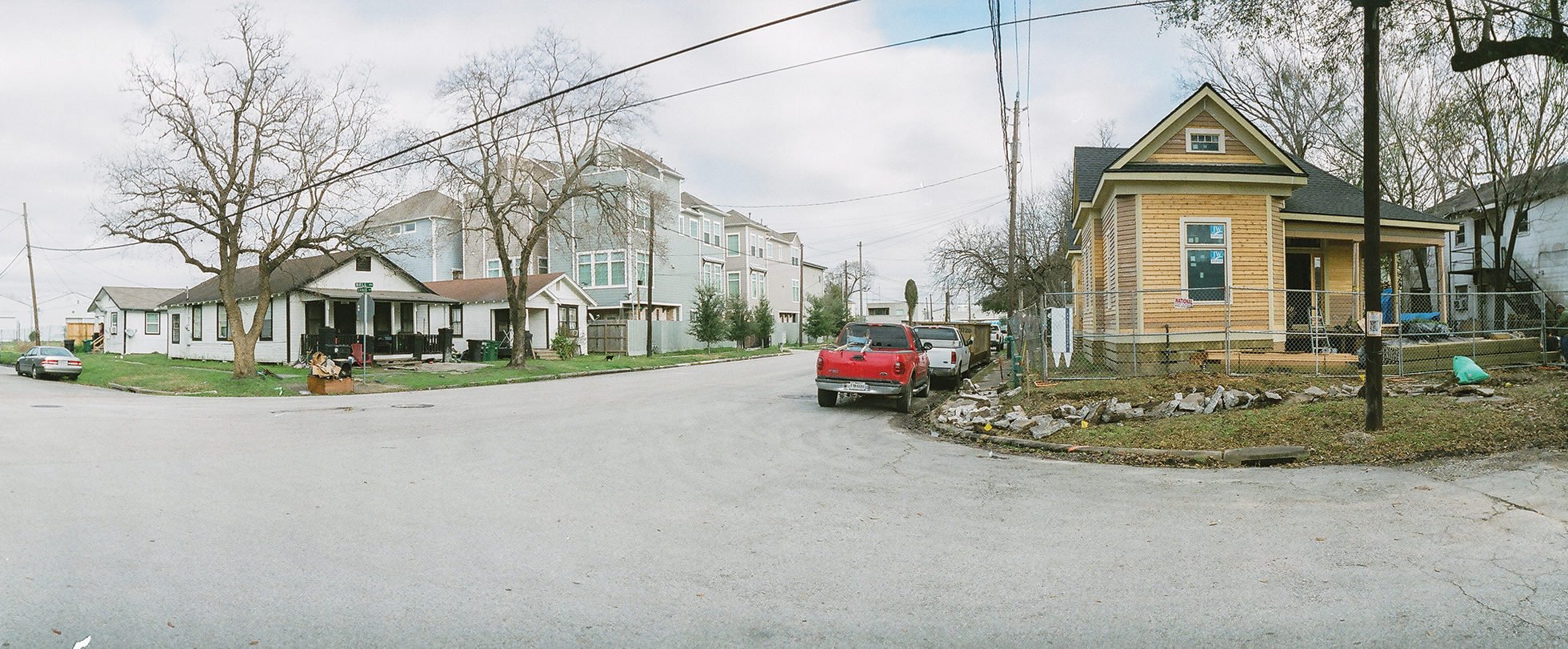
New neighbors
Second Ward, Houston
Is this Houston? Dallas? Austin? San Antonio? That it is impossible to tell is telling. Nicanor says that this unsettling medley of old and very, very new doesn’t represent “the right kind of progress architecturally or socially.” Looking at housing like this, she sees “a rampant sense of single-family homogeneity entirely devoid of any imagination and disconnected from the realities of families and how they age.”
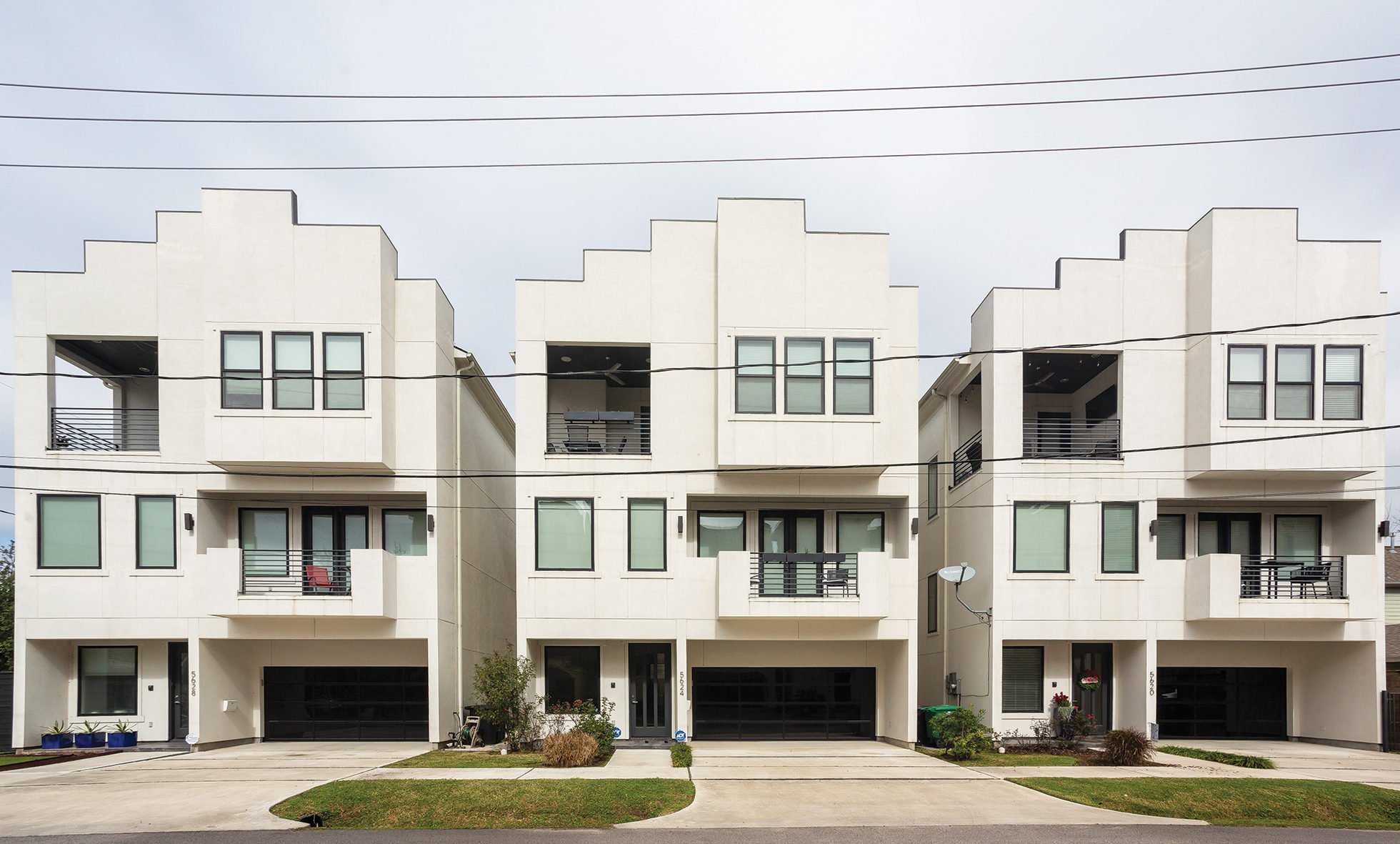
Banality of repetition
Midtown, Houston
You might have trouble telling which one of these is yours after a few cocktails at the hip new bar down the street.

Who’s the idiot?
Hollywood/Santa Monica, Dallas
“I think it’s almost disrespectful when you build a big, hulking box,” Koush says. “But I’m also not a developer, so I see things differently than they do, and they think it’s probably stupid to build what I did. And they’re like, ‘You’re an idiot.’ And I’m like, ‘You’re an idiot.’”
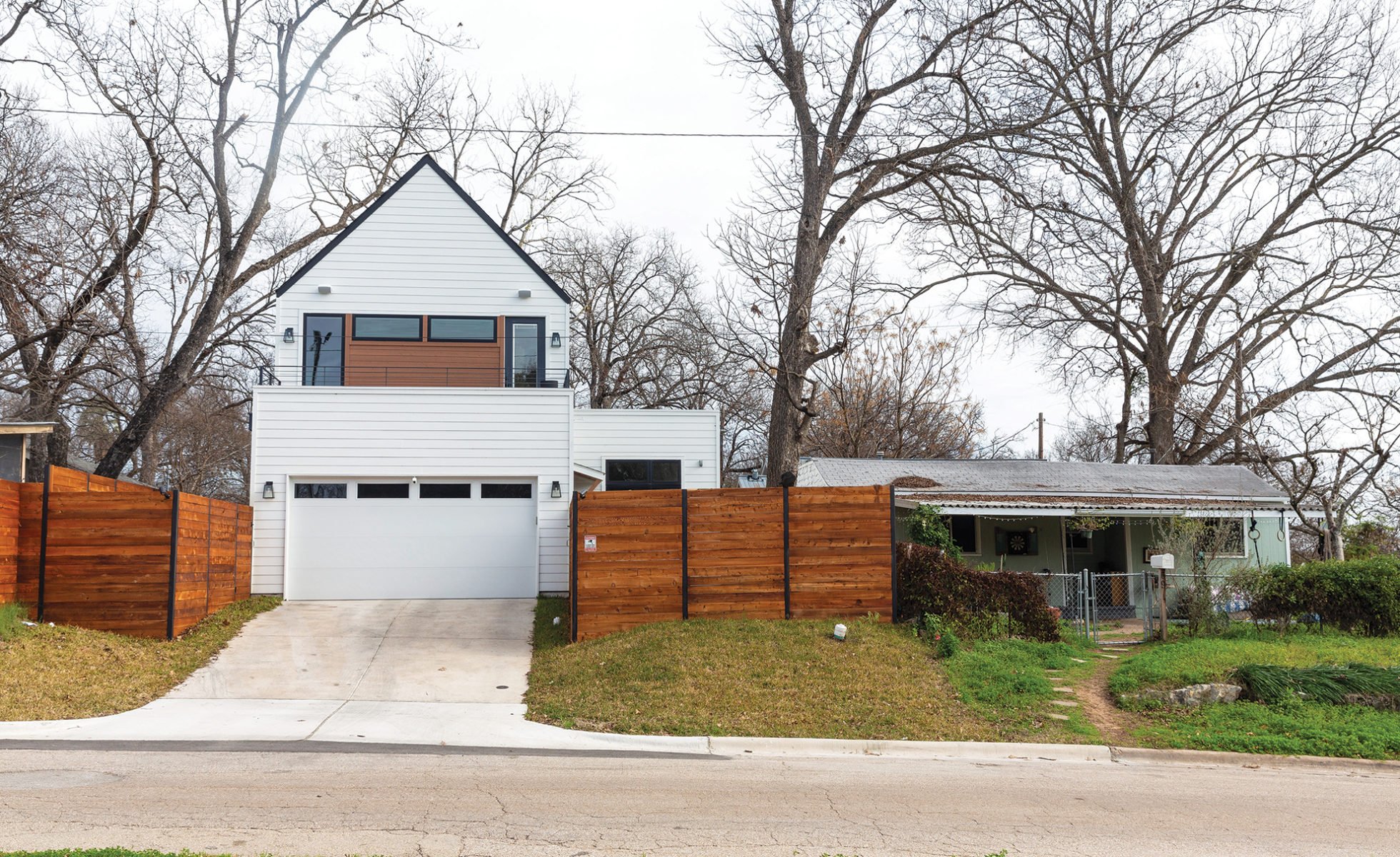
Cars first
East Austin
Adding people in Texas means adding cars, either because transit is infrequent or unreliable, or because driving is a hard habit to break. That Texans are essentially required to own a car in sprawling cities that don’t always have sidewalks, let alone dedicated bike lanes, leads to architecture that greets visitors with a garage door. Presumably, there’s a doorbell there somewhere.
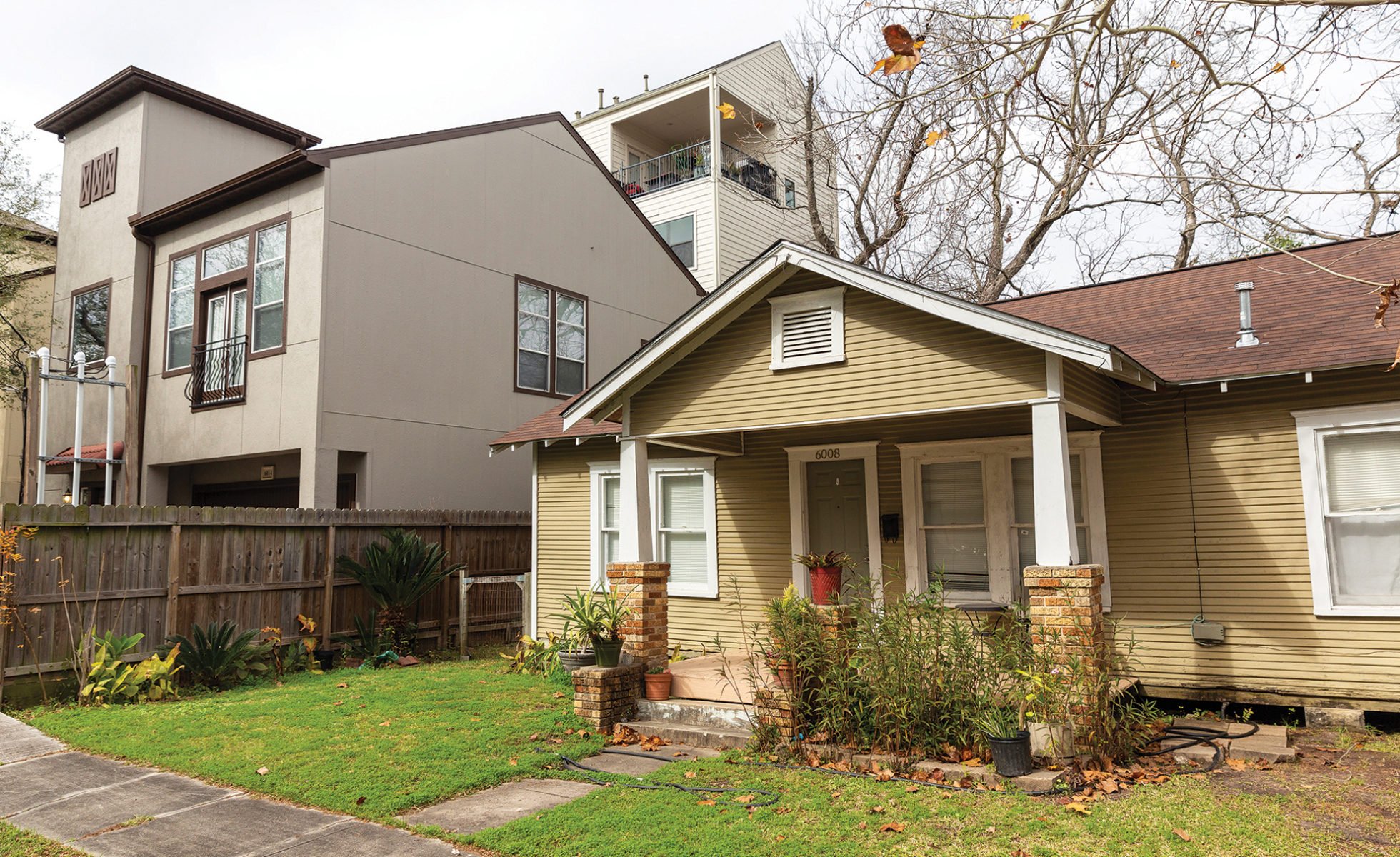
The eye of the lienholder
Second Ward, Houston
Cottages and bungalows that are being demolished or overwhelmed by the scale of new construction, Koush says, “have a lot of character because they’re old, but when they were built they weren’t considered very interesting or nice.” The
new construction heightens the contrast between a stoop with potted plants and, say, a two-car garage.

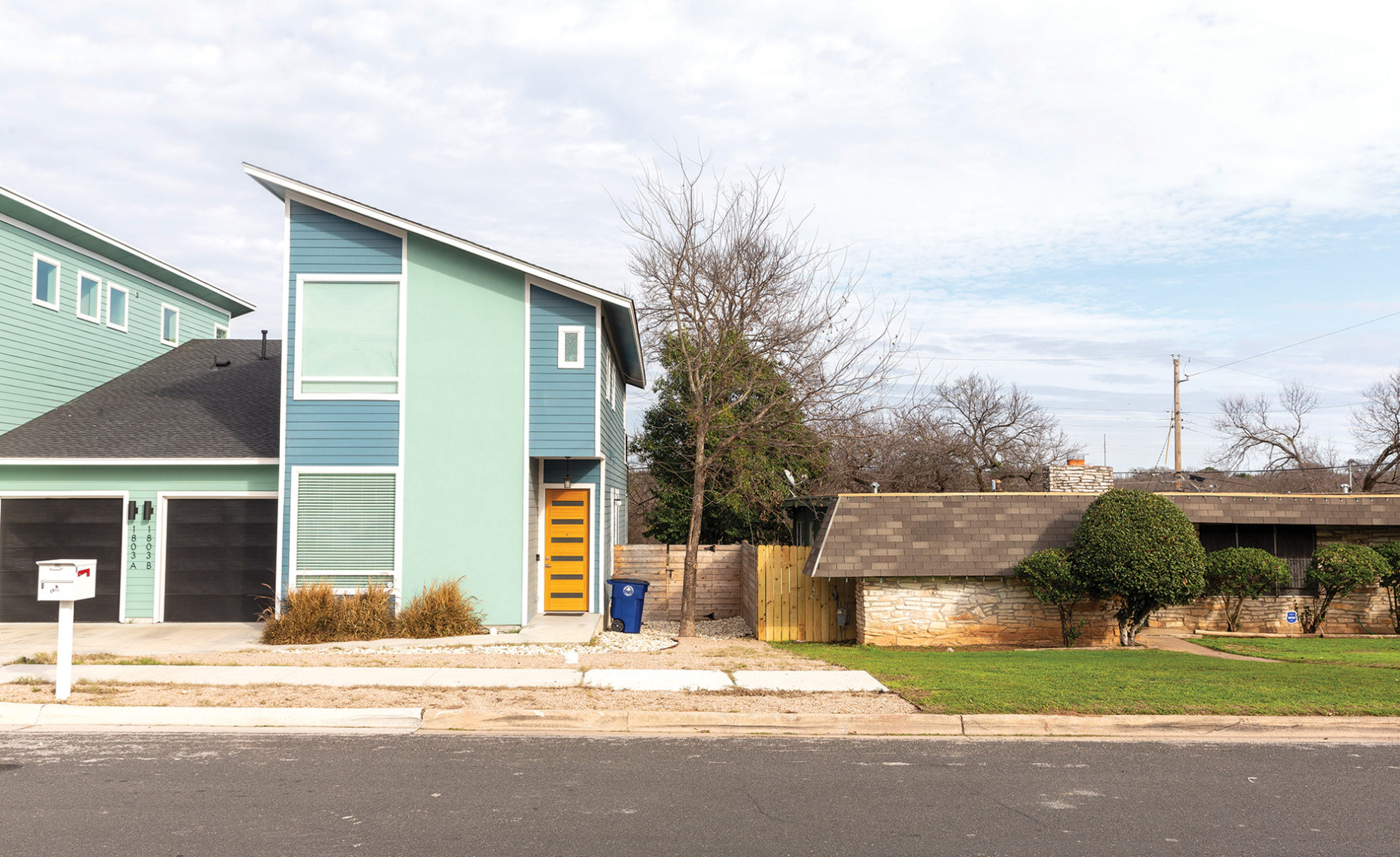
They grow up so fast
East Austin
“When I work in these old neighborhoods,” Koush says, “I like to respect the scale of the context and massing.” Massing refers to the overall effect of a building’s shape and form. It’s like meeting someone intimidating: Is he coming at you, all broad shoulders and forehead? That’s massing. Koush tries to design new houses that aren’t as domineering as these two, because they’re about the same height or width and they use the same fundamental shapes as the houses that are already there. Plus, a more modest scale leaves room to preserve and plant trees, increasingly necessary in warming Texas cities to provide shade, sop up increased rainfall and floodwater, and sequester carbon from the atmosphere.
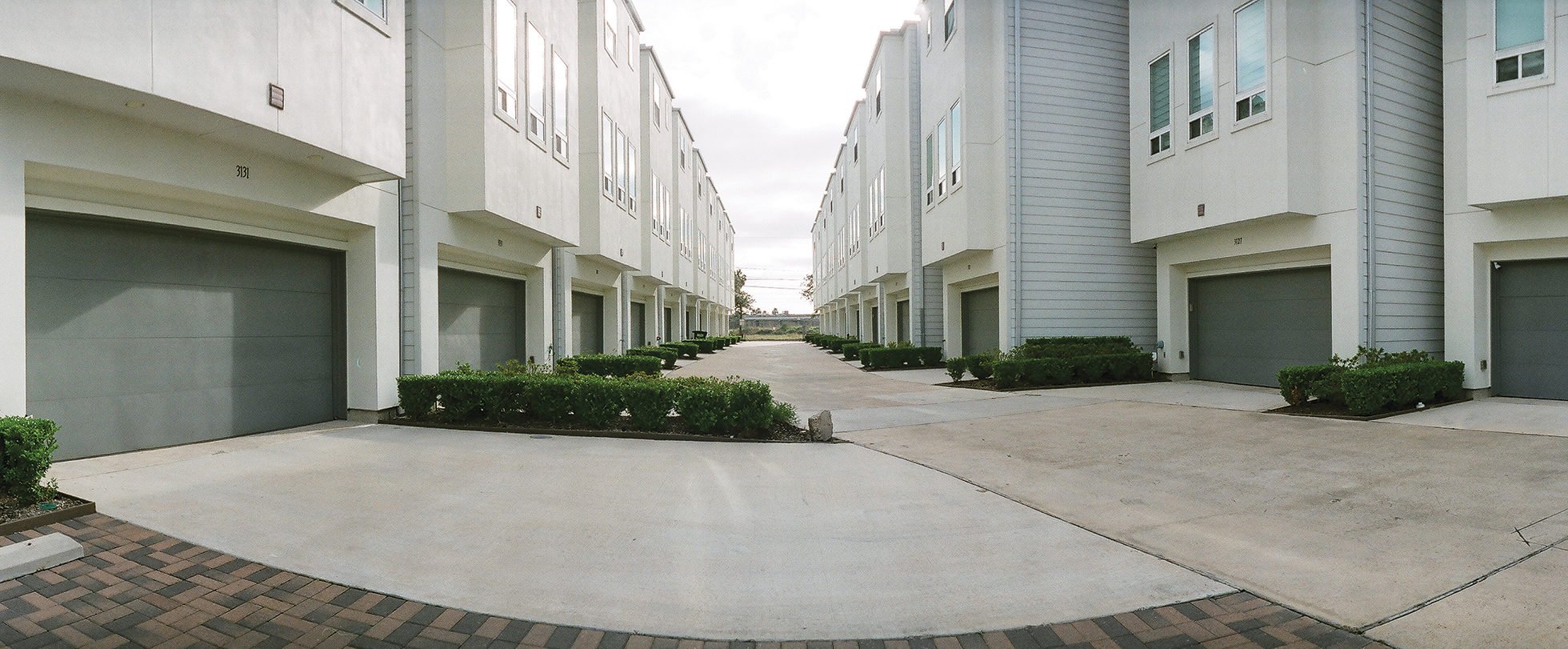
Practical, but ugly
Second Ward, Houston
This pack of townhouses might allow more density in this neighborhood, but the architecture is about as charming as the blunted shrubs lining the driveways. “Increasing density is something that needs to be done,” Koush says, “but the way it’s being done is not very good.”
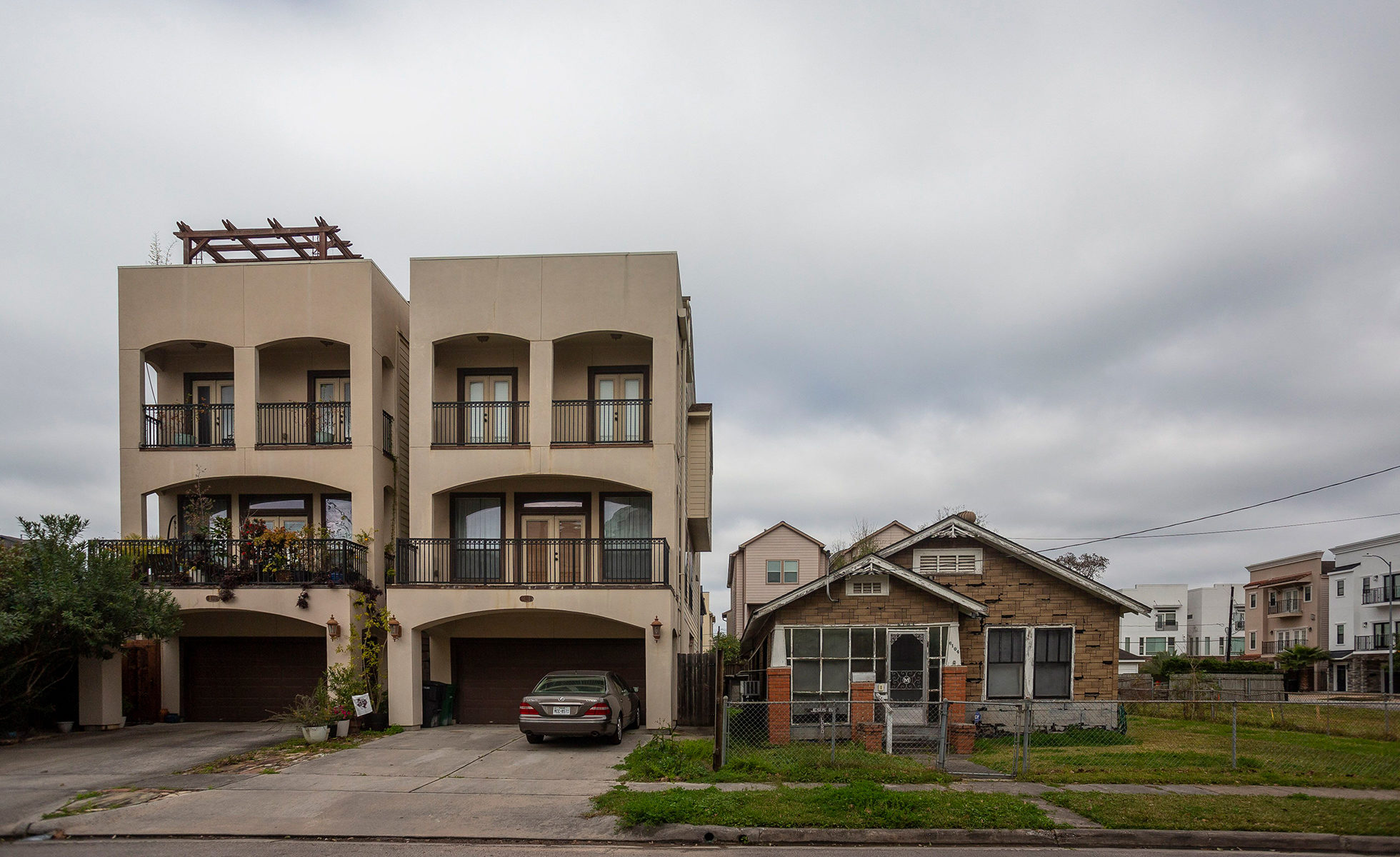
I’m walkin’ here!
Midtown, Houston
Their aesthetic judgments notwithstanding, pedestrians should be grateful, at least, for the setback of this two-pack of townhouses. It allows the owner’s car to pull up far enough not to block the sidewalk. In Houston, pedestrians would call that a win.
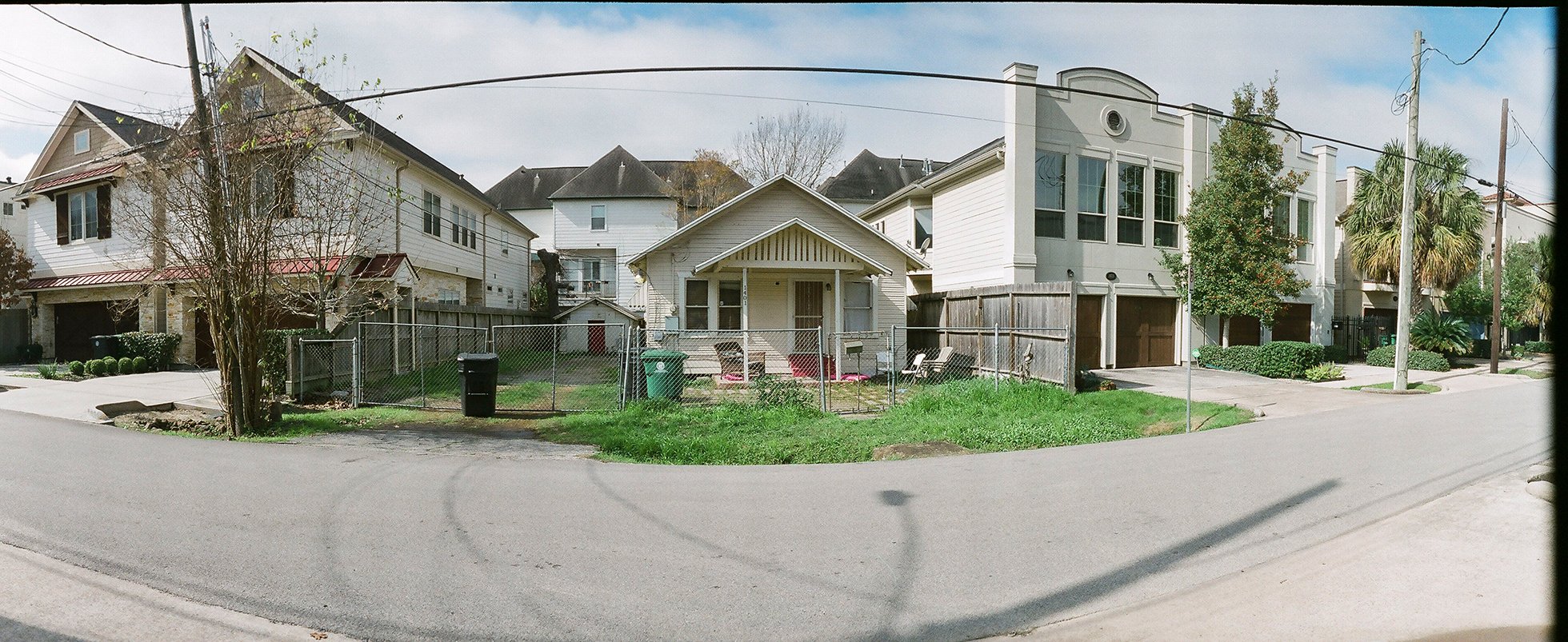
Stuck in the middle
Midtown, Houston
Change is ragged. Sure, the architectural styles are all over the place. Sure, the sidewalk is missing. Sure, the chain-link fence is sagging. But in the end, it’s not even about the architecture. “As an architect,” Koush says, “it pains me to say that architects are pretty low on the chain. There’s a great chain of being with bankers and politicians at the top, and then everyone going down from there.” And the working families who have contributed to cities that can’t or won’t protect them from markets that create images like this one? They seem to be at the very bottom.
Correction: This post has been edited to correct an error that appeared in the print edition, which stated that Maria Nicanor moved from Barcelona to Houston. She moved from Madrid. The Observer regrets the error.
This story is the first from our special issue on housing. This issue also marks the start of our new housing beat. Want more stories like this? Contribute to our Kickstarter.
Read more from the Observer:
A Democratic Socialist Damn Near Won the Texas Primary: It took a small army of politicians and pundits to stave Bernie Sanders off.
The Gentrification of Texas: As the cost of housing skyrockets, Texans are getting pushed out and left behind. The stakes couldn’t be higher.
In ‘Barn 8,’ an Unsparing Look at the Industrial Chicken Industry: Deb Olin Unferth’s darkly comic novel imagines a chicken heist gone wrong—and takes on the factory farming industry.

